Different backaches are relieved through exercises, such as bent-over rows, back extensions, and pull-ups are used to strengthen back muscles. These exercises not only strengthen your back muscles but also give relief by eliminating pains and aches in your back muscles or joints. If you’ve ever had backaches, you know just how unbearable they can be — and you’re not alone. In 2023, low back pain affected 659 million people worldwide. It is estimated that cases will increase to 800 million by 2040.
Strengthening your back muscles is a specific way to prevent back pain and improve your mobility range. Almost every movement your body makes somehow engages your back, thus this pain can damper your activities.
Strengthening Your Back: A Comprehensive Guide
Talking about your backaches, which muscles are you targeting? Your back has some primary muscles named as:
- Latissimus dorsi, in the area below your armpits down the sides of your back.
- Rhomboids, in the mid-upper back.
- Trapezius, run from your neck to your mid-back.
- Erector spinae, run along your spine.
Some exercises are jotted below to target a combination of these muscles and may also affect other upper body muscles in your shoulders, chest, and arms.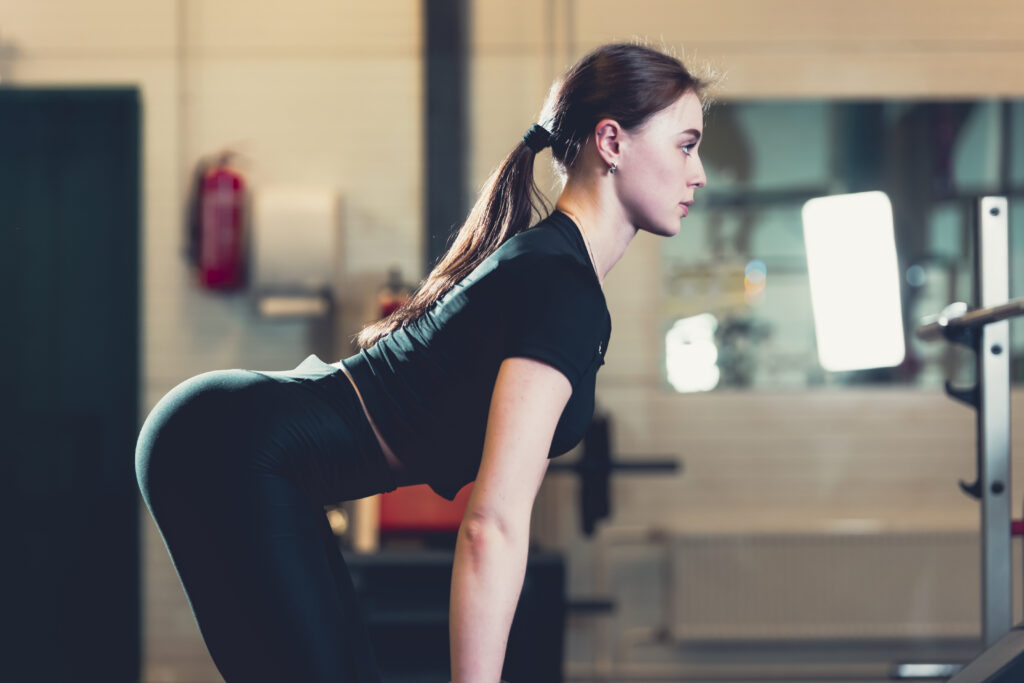 Importance of Back Strength
Importance of Back Strength
Let’s understand the importance of back strength and its role in your routine performance. A strong back is the basic need for maximal progress and success in training. A stronger back helps to enhance the sustainability of your training, better your posture, and lower the risk of injury.
It means a strong back will help to:
- Enhance your max strength
- Make your posture better
- Decrease the factors of injury risks
You need a strong back to jump higher, sprint faster or throw further. Your back muscles allow progression in your training and therefore when starting to lift serious weights, it’s your back that holds you back in increasing your squat, dead lift, or bench press.
Key Muscles of the Back
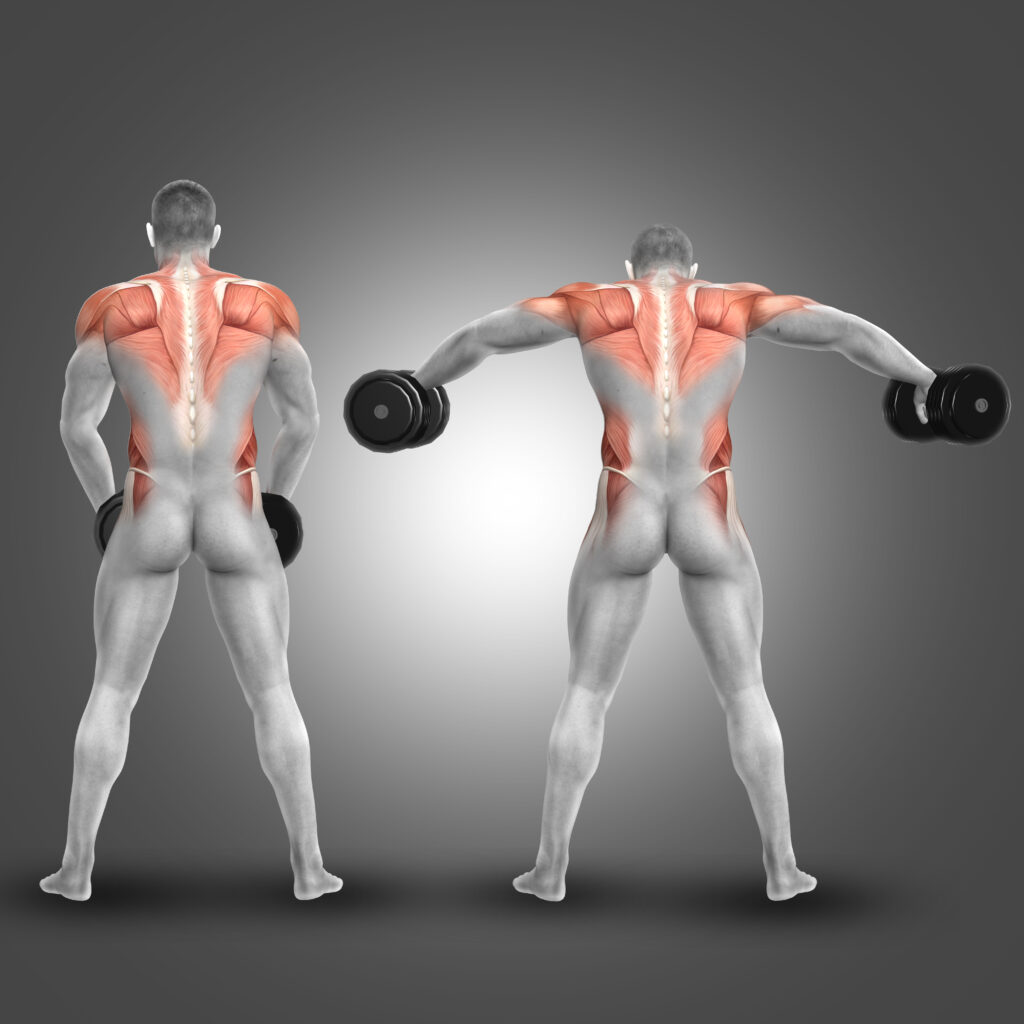
Three major groups of back muscles are:
- Superficial muscles are attached to the shoulder girdle
- Intermediate muscles are attached to the posterior thorax
- Deep muscles are attached to the vertebral column, also known as the intrinsic muscle group
These groups serve to produce flexion/extension, rotation, and side bending of the back. These muscles also assist the movement of the limbs, loco-motor function, and breathing.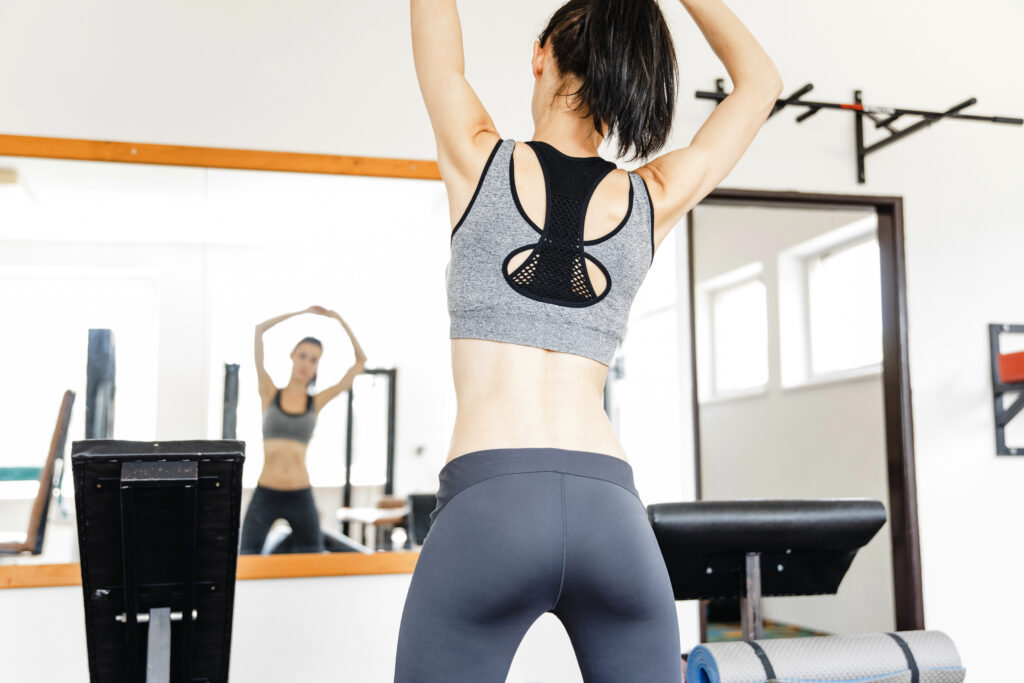 Additional Terminology
Additional Terminology
- The superficial and intermediate muscle groups are also named immigrant muscles since they form the muscles of the upper limb that have migrated to the back during fetal development.
- The deep back muscles are also called true back muscles. They are found deep in the extrinsic muscles and the thoracolumbar fascia separates them from others.
Physiotherapy Relevance
For correct diagnosis and treatment of backaches, a good understanding of the back muscle anatomy is critical. Generalized back pain is common in people with the etiology of the pain commonly traced to a strain of the skeletal muscle.
Superficial Group
The first category of back muscles, the superficial muscles are located posteriorly on the back, whose function is to move the scapula. These are large and superficial and can be identified easily by their population. The superficial muscles consist of the following minor muscle groups:
- Trapezius
- Rhomboids
- Levator scapulae
- Latissimus Dorsi
Intermediate Muscles
The intermediate back muscles include two groups:
- Serratus Posterior Superior
- Serratus Posterior Inferior
These muscles cover your vertebral column to your rib-cage and assist with relaxing and contracting the ribs. They are also thought to have a role as accessory back muscles.
Deep Back Muscles
These are the highly developed, and collectively extended muscles of the back from the sacrum to the base of the skull. They control the movements of the vertebral column and the posture of the body in different conditions.
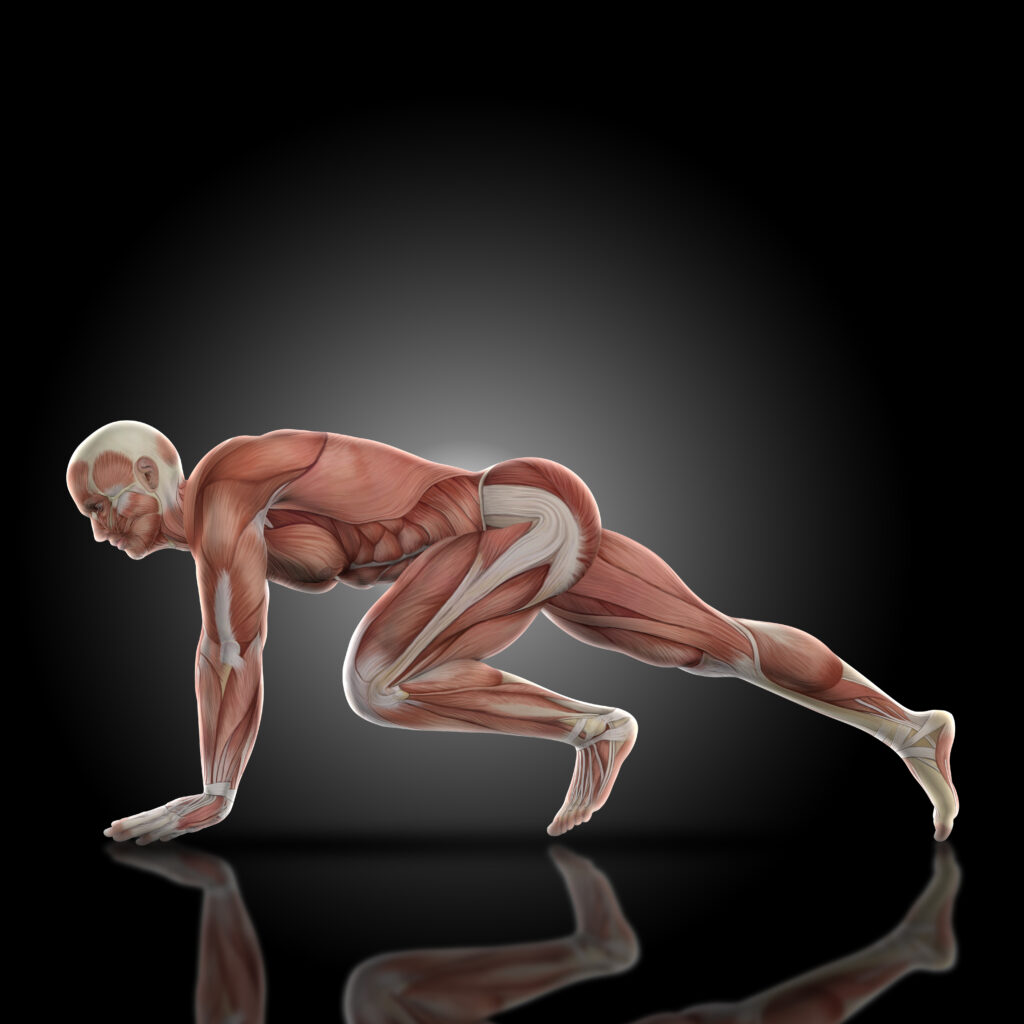
Fascia covers these muscles deeply and plays an important role in their organization. The deep muscles of the back are subdivided into the categories jotted below:
- Superficial,
- Intermediate
- Deep layers.
Exercises for Upper Back Strength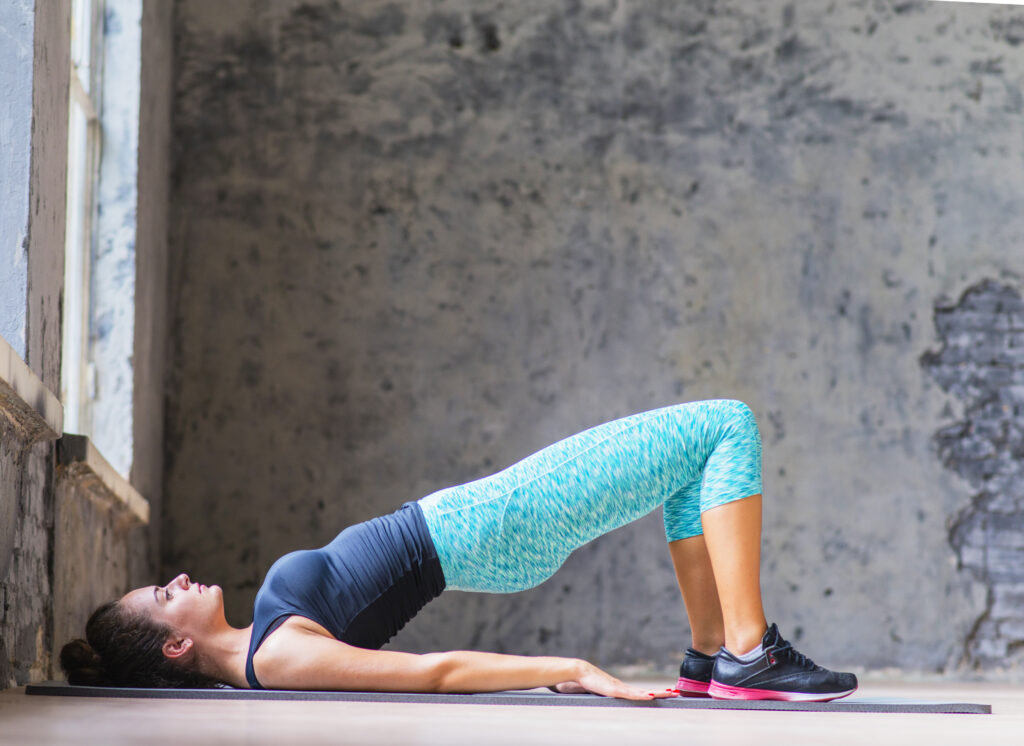 Some examples of exercises for your upper back are being discussed here so that you may get guidance about the exercise to remove your backaches but the thing to focus on is to start each exercise slowly. Consult with your doctor or physiotherapist to know when you can start these exercises and which ones will work best for you. The general rules to start an exercise for a stronger back are:
Some examples of exercises for your upper back are being discussed here so that you may get guidance about the exercise to remove your backaches but the thing to focus on is to start each exercise slowly. Consult with your doctor or physiotherapist to know when you can start these exercises and which ones will work best for you. The general rules to start an exercise for a stronger back are:
- Stand tall or you may sit on a firm chair.
- Clasp your hands in front of you, With your arms about shoulder height
- Keep your chin down toward your chest.
- To round your upper back, keep straight forward, pulling your shoulder blades apart. Now you will feel a stretch across your upper back and shoulders.
- Hold for 10 to 15 seconds.
- Repeat 2 to 3 times.
1: Mid Back Exercise
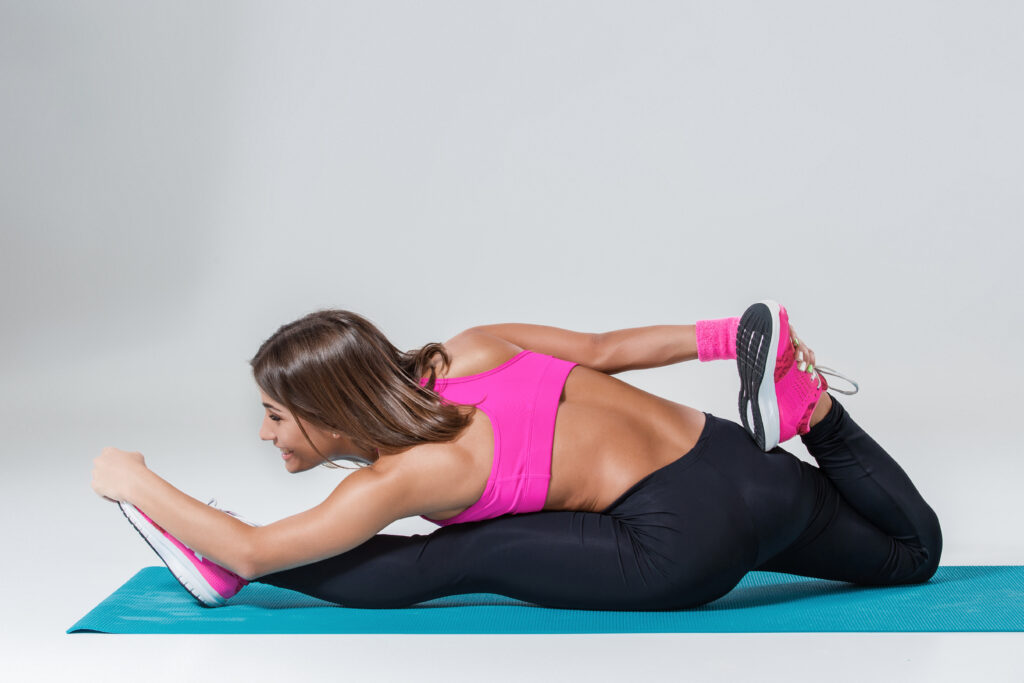
If you have knee pain, this exercise is not for you.
- Sit back on your ankles by kneeling on the floor.
- Place your hands on the floor by leaning forward, and stretch your arms in front of you. Keep your head between your arms.
- Try to reach as far in front of you as possible by pushing your chest towards the floor gently.
- Hold for 20 to 30 seconds.
- Repeat 3 to 4 times.
2: Shoulder Rolls
- Keep your chin slightly tucked while Stand or sitting up straight.
- All motion should be on your shoulders and your arms must be relaxed.
- Roll your shoulders up, back, down, and forward in a circular motion.
- Then repeat it in the other direction. Press your shoulders down, back, up, and forward in a circular motion. Repeat at least 2 times.
3: Wall Push Ups
- Stand against a wall with your feet at a distance of 20 to 25 centimeters back from the wall. You may reduce the distance if you feel any pain.
- Place your hands on the wall wider apart than your shoulders and start leaning forward.
- Then push back to your starting position gently.
- Motion must be smooth and controlled.
- Repeat 8 to 10 times.
4: Elbow Bent Exercise
- Hold an exercise band in both hands in front of you while standing or sitting. Close both sides of your elbows and bend at a 90-degree angle. Keep your palms face up.
- Squeeze your shoulder blades together and move your hands to the outside by squeezing your shoulder blades together.
- Keep your elbows at your sides and keep the band in the stretching position
- Slowly return to your
- Repeat 8 to 12 times.
Exercises for Lower Back Strength
In our region, low backaches are the most common ailment due to which people visit the doctor.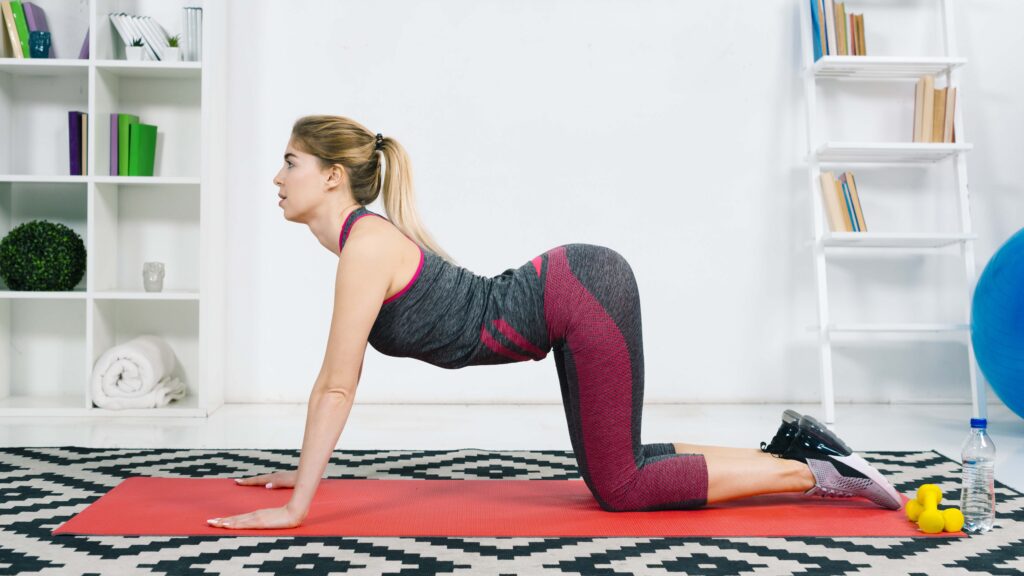
More than 80% of patients came with a horrible complaint about nonspecific low back pain, or pain that’s not caused by spinal abnormality.
Causes of Nonspecific Backaches are:
- Nerve injuries
- Degenerative Changes
- Muscle Strain
More serious causes include:
- Cancer
- Infection
- Neurological disorders
These simple, equipment-free exercises are considered best to strengthen the muscles that support your spine and help to limit your backaches.
1: Bridges
The large muscle of the buttocks is the gluteus maximus. It’s the strongest muscle located at the hip. It’s responsible for movement, including hip extension motion like squats.
You may feel back pain due to weakness in the gluteus muscle because these muscles work as stabilizers of the hip joints and lower back during walking.
Muscles Workout:
- Lie on the ground with your feet flat and hip-width apart.
- Press your feet into the floor With your hands by your sides, and slowly lift your buttocks off the ground until your body is in one straight line.
- Then lower your buttocks down.
- Repeat 10 times.
- Perform 4 sets.
2: Lying Lateral and Rising Legs
The hip abductor muscles are used to raise your leg to one side by keeping it away from your body. Your pelvis gets support through hip muscle when you’re standing on one leg.
In case of weakness in these muscles, you feel difficulty in mobility and balance and this instability causes lower backaches.
Muscles Workout:
- Slightly bend your leg on the ground by lying on one side.
- Draw your belly button toward your spine by engaging your core.
- Without moving your body, raise your leg now.
- Hold for 3 seconds at the top.
- Repeat on the other side.
- Perform 2 sets on each side.
3: Supermans
Back extensors located at your spine help you maintain an upright posture to support your spine and pelvic bones that allow your back to bend as an arc.
Sometimes this exercise affects you badly and increases your backaches. In that case, you may stop doing it until you receive further evaluation. Consult with your doctor who may rule out more serious causes of your back pain.
Muscles Workout:
- Extend out your arms in front of you and your legs long while lying on your stomach.
- Keep hands and feet lifted off the ground until you feel a compression in your lower back.
- Engage your core muscles and lift your belly button off the floor by keeping them away with your hands and feet.
- Keep your eyes on the floor during this exercise to avoid neck strain.
- Hold for 3 seconds.
- Return to the initial position.
- Repeat 5 times.
Core-Strengthening Exercises for a Stronger Back
Backaches have been affecting millions of people in different countries and this problem is increasing with time due to our lifestyle of being sedentary and sitting most of the time. Research has shown a great increase in backaches is linked with the aging process as bone mass diminishes, muscles stiffen and discs begin to lose fluid and flexibility. A sedentary lifestyle and being overweight enhance the risk of getting backaches.
But we are here for you with good news to relieve your backaches. You may do it by focusing on your core exercise. Core exercises are best to strengthen the muscles wrapped around your abdomen and spine. From a world-class athlete to a sedentary person, a back-bostling core exercise gives relief from back pain.
Here are some core exercises to tone your core and ease your back aches. incorporating these exercises three to four times a week can save you from back aches.
1: Planks
Get into a push-up position, and bend your arms to support your body with your forearms. Tightening your abdominal and glute muscles while keeping your torso legs and hips in a straight line and fixing your eyes on your forearms. Draw your core muscles at the level of your belly button and don’t overcompensate with your back muscles. Try to hold that position as long as you can.
2: Bird Dog
Keep your spine neutral means don’t bend it or arch up. This will help you to get on all fours. Now, put your weight on your core muscles by extending your left leg and reaching forward with your right arm. Hold your breath for a second and then return your limbs to their original position. The same exercise must be repeated for the other side. This is the simplest exercise to engage all your core stabilizer muscles to maintain the balance of the body.
3: Crunches
Strengthening and engaging your core muscles, especially those coveted six-pack muscles, is a great task and everyone wants to know the effective ways to achieve this goal. Crunches are good for backaches. This is a simple workout that may be done by propping your calves on a table or chair. At the next step cross your arms on your chest and lift your shoulders by keeping your back straight. If you’re feeling it hard, then try crossing your arms in front of you instead of crossing them over your chest. This will make it easier for your stomach and back as well.
Conclusion
To obtain the exceptional benefits from back strengthening exercises, perform the exercise that is prescribed by physiotherapists or healthcare professionals based on your physical health condition and pain severity, as some exercises might negatively impact your backaches.
Back exercises are performed for the strengthening of back muscles, flexibility, and aerobic fitness and these factors are influential for the rehabilitation of low backaches. Incorporating the muscular strengthening exercise may increase the flexibility of surrounding tissues that may assist in increasing the range of motion and support the patient’s movements without any backache.







